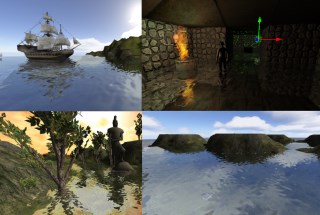

Lastly, for the polypropylene cylinder, our density came out as 0.897 and the accepted density was 0.900g/cm^3. For the acrylic cube, our density came out as 1.17g/cm^3 and the accepted density was 1.19g/cm^3. For the copper cube, our density came out as 8.82g/cm^3 and the accepted density was 8.933g/cm^3. Our results compared fairly close to their accepted values. In addition, we calculated the percent uncertainty for all of our measured values, of which most came out to be around 0.2%.

We followed the same procedure for the cylinder, except instead of measuring the length, width, and height, we measured the height and diameter. After finding the density, we then looked up the accepted densities of the object materials and then calculated the percent error of our measurements. Once we found the length, width, height, and mass of the cubes, we could then calculate the volume, using the formula above and then finally the density. Additionally, we weighed the objects using a digital mass balance. In fact, because the sides did not measure out to be equal, it was not a cube, but instead a rectangular prism. To find the density for the cubes, we needed to use a vernier caliper to measure the length, width, and height of the sides of the cube. In this lab, our goal was to calculate the densities of three objects with the smallest percent error possible.

Pictured below are the measurements of the copper cube, the acrylic cube, and the polypropylene cylinder. In addition, we will calculate the percent uncertainties for the length, width, height, mass and density of each object. Using these measurements, we will then calculate the densities of the objects, research the accepted densities of the objects, and then calculate our percent error on our calculation. Next, using the digital mass balance, we will find the mass of each object in grams. For the cylinder, we will measure the height and diameter, in centimeters, using the vernier caliper. For the two cubes, we will first measure the length, width, and height, in centimeters, of each cube using the vernier caliper. Since the copper and acrylic cubes are not perfect cubes, the equation for a rectangular prism must be used, which is v=lwh.įor this lab, we will calculate the density of two cubes and a cylinder. The equation for volume of a cylinder is represented b y v=πr^2 h. The three objects that I used to find the densities included a copper cube, an acrylic cube, and a polypropylene cylinder. The equation for density is density equals mass divided by volume, represented as ρ=m/v. In addition, we will then calculate the percent error of our measurements. To do this, we will use a vernier caliper and a digital mass balance. The purpose of this lab is to calculate the different densities of three objects.
#Coppercube procedural mods
Modding SupportĬreate mods for the game to alter gameplay, visuals and more to create custom experiences within the game.Lab Partners: Jacob Hoffner & Connor Frey Sandbox mode allows the player to customize the game to their liking by changing settings such as zombie density, loot abundancy etc. Regular mode for example features permadeath. This means the game will be played as intended by the developer. In the regular mode the game offers no customization options. The game features a regular and a sandbox mode. Your actions directly affect your attributes. Manage a variety of attributes ranging from hunger and thirst to fatigue. Injury Systemįighting the undead can not only result in death but often comes with injuries such as bruises, lacerations and scratches that require treatment. This ranges from fortifications for your base to makeshift weapons to protect you in a pinch. CraftingĬraft items from various resources you find in the world. Bad weather may force you to stay inside buildings to avoid getting in deadly situations. Weather can massively impact your decision making and survival chances. Sleep at night in a secured bed, in a tent or simply on the floor or use the reduced vision of zombies at night to scavenge for resources. Finding food and water but also tools and weapons are important to ensure long term survival. Utilizing what you find in the world helps to increase your chances of survival. Use stealth to avoid zombies or take them head on in a fight. Everything else is populated at runtime, giving every survival attempt a different world to explore. The terrain shape and road network is at the current time of development prebuild. You have to survive harsh weather conditions, zombies and resource scarcity in a procedurally populated world. Ozone Wipeout is a post apocalyptic open world zombie survival game.


 0 kommentar(er)
0 kommentar(er)
